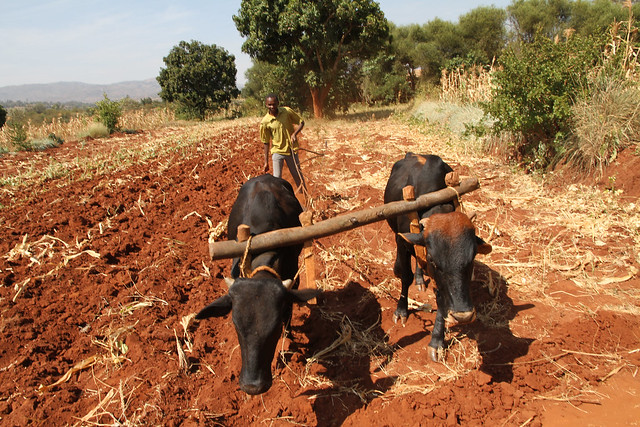“Shifts in climate are strongly linked to increases in violence around the world … US scientists found that even small changes in temperature or rainfall correlated with a rise in assaults, rapes and murders, as well as group conflicts and war.
– BBC News, Rise in violence ‘linked to climate change’, August 2, 2013
The debate about the relationship between climate change and conflict rages on. This August, Science published a high-profile evidence survey, Quantifying the Influence of Climate on Human Conflict, which gained worldwide media attention, including the BBC coverage quoted above and a New York Times op-ed by the authors arguing that “our results suggest that our children and grandchildren could face an increasingly hot and angry planet.”
Researchers at the Justice and Security Research Programme (JSRP), however, have recently come to a very different conclusion. The JSRP’s new publication, Climate Change and Conflict: a systematic evidence review, by Tim Forsyth and Mareike Schomerus, presents an overview and analysis of 40 papers published since 2001 on climate and conflict.
Rather than uncovering a clear consensus, their work revealed questions about these studies’ research methodologies, uncovered an implicit bias towards gathering evidence on conflict emergence vs local-level adaptation to climate change, and an increasing tendency to ‘frame’ climate change responses through the lenses of securitisation and military responses.
Some of the key questions and findings that emerge from this work include:
Are we measuring the right things? Forsyth and Schomerus identified sometimes-muddy correlations between environmental effects and social outcomes. For example, should a lack of forest cover automatically mean the land be considered “degraded”, and therefore more likely to correlate with conflict? The authors found that “studies that emphasise ‘large-n’ samples, using regression analysis, [often] assume that variables such as forest cover are linear indicators of land degradation, and linked to rates of violence.” Forsyth and Schomerus found that too often, the assumptions and causal models used were “unexplored, unproven, or too simple.”
Are we asking the right questions? Forsyth and Schomerus question the usefulness of a single-minded focus on proving correlations between climate change and conflict. Finding out about how people live with scarcity and unpredictability might be more useful for the local governance of climate change than trying to prove that individuals will respond to it with violence.
To this end, the authors identified explicit studies that have referred to how adaptive changes have avoided conflict. Rather than high-level modeling and analysis, this type of research is usually based in local fieldwork-based studies involving end-users on the ground.
 Some of the strongest claims found within the evidence were actually presented on the basis of assumed causal linkages. For example, Jared Diamond’s statement that there are ‘transparent linkages’ between population growth, environmental degradation, and conflict in Rwanda are presented on the basis of assumed, not proven causal linkages — similar changes have not led to analogous outcomes in other locations.
Some of the strongest claims found within the evidence were actually presented on the basis of assumed causal linkages. For example, Jared Diamond’s statement that there are ‘transparent linkages’ between population growth, environmental degradation, and conflict in Rwanda are presented on the basis of assumed, not proven causal linkages — similar changes have not led to analogous outcomes in other locations.
Studies coming from military sources tend to adopt the perspective that climate change will lead inevitably to violent conflict. The securitisation of the climate debate also serves a political end: undermining non-violent, adaptive forms of assistance, while framing future development aid as a question of military control to be undertaken by military actors.
Correlating climate change and conflict tends to depoliticise and de-emphasise other, important, causes of conflict. Some of the research surveyed criticised the use of phrases like ‘environmental’ or ‘climate’ refugees, as these terms imply a mono-causality rarely found in human reality.
Representing climate change in terms of war and violence attracts attention in the media. Many popular discussions do not question the underlying models of causality used by the researchers, and too often use the evidence presented as ‘proof’ for political arguments.
The authors close in reiterating the challenges of gathering politically neutral, high-quality evidence around the relationship between climate change and conflict.
They identify a clear need for a more nuanced explanation of the linkages between climate change and conflict, including how each of these terms are conceptualized and measured.
Second, they call for a greater awareness of who benefits from the production of evidence around this topic. Writing about climate change in sensational terms is a “professional opportunity”, and institutes and academics achieve more visibility and political impact when they write about potential imminent disaster.
Finally, the identify a need to understand more about what causes conflict, and what social practices exist in zones or times that have no violence. The authors suggest that adaptive capacity, or conflict resolution, may be the norms that need to be studied and replicated, rather than focusing on violence alone.
The entire paper is available for download here.



